 |
 |
 |
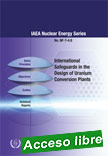 |
International Safeguards in the Design of Uranium Conversion Plants
IAEA Nuclear Energy Series, 2017, 36 p.
This publication is the fourth in the IAEA Nuclear Energy Series to provide guidance on the inclusion of safeguards in nuclear facility design and construction. It is principally intended for designers and operators of conversion plants; however, vendors, national authorities and financial backers can also benefit from the information provided. |
The publication complements the general considerations addressed in International Safeguards in Nuclear Facility Design and Construction, IAEA Nuclear Energy Series No. NP-T-2.8.
Extraído de: http://www-pub.iaea.org/books/IAEABooks/10759/International-Safeguards-in-the-Design-of-Uranium-Conversion-Plants
|
 |
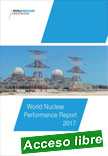 |
World Nuclear Performance Report 2017
World Nuclear Association, June 2017, 36 p.
More than 9 GWe of new nuclear capacity came online in 2016, the largest annual increase for over 25 years. By the end of 2016 there were 448 reactors around the world, up from 441 at the start of the year. Ten reactors started to supply electricity and three were closed down, resulting in a net increase in nuclear capacity of just over 8 GWe. The amount of electricity supplied by nuclear globally increased by 35 TWh to 2476 TWh. |
This increased generation is the result of both additional generation from new reactors coming online and continued performance improvements from the existing fleet. The number of reactors being built remains high, with 61 under construction at the end of 2016. There were only three construction starts last year and, with ten units having completed construction, the number of reactors under construction has fallen from 68 at the start of 2016. There has been a pause in new reactor construction starts in China; however, the pouring of first concrete for Tianwan 6 in September marked the resumption of reactor construction.The first Korean-designed APR-1400, unit 3 at the Shin Kori nuclear power plant, was connected to the grid by Korea Hydro and Nuclear Power in January. Construction of four APR-1400 reactors at Barakah in the United Arab Emirates continued to make good progress and the first reactor is due to startup next year. In Russia the first VVER-1200 at Novovoronezh II, was connected to the grid in August.2016 saw the start-up of Watts Bar 2, the first reactor connected to the grid in the United States in 20 years. But it also saw continuing challenges to the operation of some reactors in deregulated markets and the ongoing construction of four reactors at VC Summer and Vogtle. More must be done to ensure nuclear plants can compete in a fair electricity market.The process of gaining regulatory approval for the restart of reactors in Japan is proving to be protracted and extensive and some restarts have been delayed by legal challenges. However, five reactors have now restarted and a further 19 have applied to do so.In the UK in 2016, the go-ahead was given for Hinkley Point C, the first of a planned new generation of nuclear power plants in that country. Nuclear remains the largest single source of low carbon generation in Europe, but political pressure in some countries is threatening this.The world’s nuclear power plants have performed well this year, making a significant contribution to meeting the need for clean, reliable and affordable electricity. But more will need to be done to ensure this contribution grows as it will need to over the coming decades in order to meet the Harmony goal of supplying 25% of the world’s electricity by 2050.
Extraído de: http://world-nuclear.org/our-association/publications/online-reports/world-nuclear-performance-report.aspx
Home-page: http://world-nuclear.org/our-association/publications/online-reports/world-nuclear-performance-report.aspx
Full report: http://world-nuclear.org/getmedia/b392d1cd-f7d2-4d54-9355-9a65f71a3419/world-nuclear-performance-report-2017.pdf.aspx
Graphics: http://world-nuclear.org/gallery/world-nuclear-performance-report-2017.aspx
|
 |
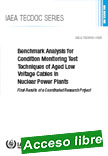 |
Benchmark Analysis for Condition Monitoring Test Techniques of Aged Low Voltage Cables in Nuclear Power Plants - Final Results of a Coordinated Research Project
IAEA TECDOC, 2017, 192 p.
This publication provides information and guidelines on how to monitor the performance of insulation and jacket materials of existing cables and establish a programme of cable degradation monitoring and ageing management for operating reactors and the next generation of nuclear facilities.
|
This research was done through a coordinated research project (CRP) with participants from 17 Member States. This group of experts compiled the current knowledge in a report together with areas of future research and development to cover aging mechanisms and means to identify and manage the consequences of aging. They established a benchmarking programme using cable samples aged under thermal and/or radiation conditions, and tested before and after ageing by various methods and organizations. The results of these benchmark tests were then compared to identify the best condition monitoring methods and establish recommendations for improvements. The conclusions of the data analysis provided insight into condition monitoring techniques which yield usable or traceable results.
Extraído de: http://www-pub.iaea.org/books/IAEABooks/11164/Benchmark-Analysis-for-Condition-Monitoring-Test-Techniques-of-Aged-Low-Voltage-Cables-in-Nuclear-Power-Plants
|
 |
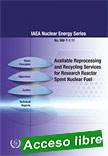 |
The high enriched uranium (HEU) take back programmes will soon have achieved their goals. When there are no longer HEU inventories at research reactors and no commerce in HEU for research reactors, the primary driver for the take back programmes will cease.
|
However, research reactors will continue to operate in order to meet their various mission objectives. As a result, inventories of low enriched uranium spent nuclear fuel (LEU SNF) will continue to be created during the research reactors lifetime and, therefore, there is a need to develop national final disposition routes. This publication is designed to address the issues of available reprocessing and recycling services for research reactor spent fuel and discusses the various back end management aspects of the research reactor fuel cycle.
Extraído de: http://www-pub.iaea.org/books/IAEABooks/10997/Available-Reprocessing-and-Recycling-Services-for-Research-Reactor-Spent-Nuclear-Fuel
|
 |
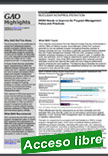 |
Nuclear Nonproliferation: NNSA Needs to Improve Its Program Management Policy and Practices
Government Accountability Office (GAO - US), September 28, 2017, 45 p.
The threat posed by the proliferation of nuclear and radiological weapons remains a pressing national security challenge. Office of Defense Nuclear Nonproliferation (DNN) implements nuclear nonproliferation programs worldwide. |
To carry out its mission, for fiscal year 2018 DNN requested an appropriation of about $1.5 billion for its 4 major programs and their 13 subprograms.
A House Armed Services Committee report, accompanying a bill for the National Defense Authorization Act for Fiscal Year 2017, included a provision for GAO to review and assess DNN's project and program management processes and systems. GAO's report examines the extent to which (1) selected DNN subprograms use program management leading practices to manage schedule and cost (2) DNN has incorporated leading practices in its revised program management policy.
GAO selected 4 DNN subprograms to review that had defined end dates and/or work scope and that GAO had not recently examined. GAO reviewed documentation on DNN and National Nuclear Security Administration's (NNSA) program management policies and practices; reviewed selected leading practices published by PMI and GAO; and interviewed agency officials.
Extraído de: http://www.gao.gov/products/GAO-17-773?utm_medium=email&utm_source=govdelivery
Highlights: http://www.gao.gov/products/GAO-17-773?utm_medium=email&utm_source=govdelivery
Report: http://www.gao.gov/assets/690/687471.pdf
|
 |
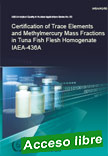
|
Certification of Trace Elements and Methylmercury Mass Fractions in Tuna Fish Flesh Homogenate IAEA-436A
IAEA Analytical Quality in Nuclear Applications Series, 2017, 64 p.
The work presented in this report refers exclusively to the re-certification of the mass fractions of trace elements and methylmercury in tuna fish flesh homogenate. The certified reference materials (CRM) IAEA-436A has been produced to satisfy the demands of laboratories dealing with environmental and food safety analyses. |
Extraído de: http://www-pub.iaea.org/books/.../Certification-of-Trace-Elements-and-Methylmercury-Mass-Fractions-in-Tuna-Fish-Flesh-Homogenate-IAEA
|
 |
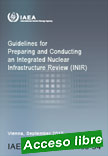 |
Guidelines for Preparing and Conducting an Integrated Nuclear Infrastructure Review (INIR)
IAEA Services Series, 2017, 52 p.
The International Atomic Energy Agency (IAEA) publication “Milestones in the Development of a National Infrastructure for Nuclear Power, Rev. 1” provides guidance to Member States interested in establishing or expanding a nuclear power programme.
|
The Milestones publication identifies 19 infrastructure issues that need to be addressed in three phases of development. Nuclear power infrastructure includes a number of ‘soft’ infrastructure issues such as legislation, regulations, institutional development, human resources planning, policies and strategies in relevant areas, as well as some ‘hard’ infrastructure issues, such as site and supporting facilities and electrical grid. The Milestones publication defines a milestone at the end of each phase for the development of a nuclear power infrastructure and provides guidance on the activities that need to be carried out to achieve each milestone.
The IAEA Integrated Nuclear Infrastructure Review (INIR) service evaluates the status of the infrastructure for the introduction or expansion of a nuclear power programme in a Member State based on the Milestones publication.
These Guidelines incorporate the modifications to the process of preparing and conducting the INIR service resulting from the experience gained since the launching of the INIR service in 2009. This publication supercedes the IAEA booklet on INIR entitled: Guidance on Preparing and Conducting INIR Misisons (Rev.1) from 2011.
Extraído de: http://www-pub.iaea.org/books/IAEABooks/12239/Guidelines-for-Preparing-and-Conducting-an-Integrated-Nuclear-Infrastructure-Review-INIR
|
 |
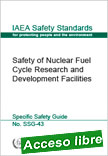 |
Safety of Nuclear Fuel Cycle Research and Development Facilities Specific Safety Guide
IAEA Safety Standards Series, 2017, 93 p.
This publication provides guidance on meeting the requirements of IAEA Safety Standards Series No. NS-R-5 (Rev.1) relating to research and development facilities in the nuclear fuel cycle. It covers the lifetime of these facilities from site selection through to decommissioning, concentrating on design and operation. |
It applies to laboratories, pilot workshops and experimental facilities that store, handle and process uranium, plutonium and other transuranics, fission products and activated materials in significant quantities. Such facilities may be involved in the study of chemical, metallurgical or radiological properties of specific radioactive materials such as prototype nuclear fuels (before and after reactor irradiation) or nuclear material or radioactive waste arising from experimental processes. This Safety Guide also applies to research and development for processes and equipment that are envisaged for later use on an industrial scale for the nuclear fuel cycle (e.g. pilot workshops for active waste conditioning).
Extraído de: http://www-pub.iaea.org/books/IAEABooks/10995/Safety-of-Nuclear-Fuel-Cycle-Research-and-Development-Facilities
|
 |
|
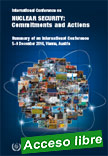
|
International Conference on Nuclear Security: Commitments and Actions
Summary of an International Conference Held in Vienna, 5–9 December 2016
IAEA Proceedings Series, 2017, 84 p.
This publication presents the proceedings of an international conference in the field of nuclear security, which took place at the IAEA Headquarters in Vienna from 5–9 December 2016. The conference was convened to discuss the international community’s experiences and achievements in strengthening nuclear security,
|
to enhance understanding of current approaches to nuclear security worldwide, to identify trends and to provide an inclusive forum at which ministers, policy makers, senior officials and nuclear security experts could formulate and exchange views on future directions and priorities for nuclear security. The publication contains the President’s summary of the conference, a summary of the ministerial segment, the full text of the ministerial declaration adopted by the conference, statements from the opening and closing sessions, an outline of the conference programme and a list of invited contributions. For the first time, the IAEA invited students and young professionals to submit an essay on a topic related to the conference for review by a panel of international judges. The three winning essays are reproduced in this publication. The attached CD-ROM contains the full conference programme, the list of conference participants, the national statements from the ministerial segment, and a selection of papers and presentations from the conference.
Extraído de: http://www-pub.iaea.org/books/IAEABooks/12238/International-Conference-on-Nuclear-Security-Commitments-and-Actions
|
 |
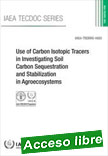 |
Use of Carbon Isotopic Tracers in Investigating Soil Carbon Sequestration and Stabilization in Agroecosystems
IAEA TECDOC, 2017, 120 p.
The global surface temperatures have been reported to increase at an average rate of 0.06C (0.11F) per decade. This observed climate change known as the greenhouse effect is attributed to the emission of greenhouse gases (GHGs), including carbon dioxide (CO2), methane (CH4) and nitrous oxide (N2O) to the atmosphere, resulting in trapping the heat near the earth’s surface causing global warming.
|
. World soils are the largest reservoir of terrestrial carbon and that soils are a source or sink of GHGs depending on land use management. Recognizing the urgent need to address the soil organic matter constraints for a sustainable agricultural production to ensure food security, this publication provides an integrated view on conventional and isotopic methods of measuring and modelling soil carbon (C) dynamics, and the use nuclear and radioisotope tracer techniques in in-situ glasshouse and field labelling techniques to assess soil organic matter turnover and sequestration.
Extraído de: http://www-pub.iaea.org/books/IAEABooks/11072/Use-of-Carbon-Isotopic-Tracers-in-Investigating-Soil-Carbon-Sequestration-and-Stabilization-in-Agroecosystems
|
 |
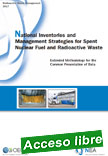 |
National Inventories and Management Strategies for Spent Nuclear Fuel and Radioactive Waste - Extended Methodology for the Common Presentation of Data
Nuclear Energy Agency (NEA), 28/08/17, 70 p.
Radioactive waste inventory data are an important element in the development of a national radioactive waste management programme since these data affect the design and selection of the ultimate disposal methods. Inventory data are generally presented as an amount of radioactive waste under various waste classes, according to the waste classification scheme developed and adopted by the country or national programme in question.
|
Various waste classification schemes have evolved in most countries, and these schemes classify radioactive waste according to its origin, to criteria related to the protection of workers or to the physical, chemical and radiological properties of the waste and the planned disposal method(s).
The diversity in classification schemes across countries has restricted the possibility of comparing waste inventories and led to difficulties in interpreting waste management practices, both nationally and internationally. To help improve this situation, the Nuclear Energy Agency developed a methodology that ensures consistency of national radioactive waste and spent fuel inventory data when presenting them in a common scheme in direct connection with accepted management strategy and disposal routes. This report is a follow up to the 2016 report that introduced the methodology and presenting scheme for spent fuel, and it now extends this methodology and presenting scheme to all types of radioactive waste and corresponding management strategies.
Extraído de:http://www.oecd-nea.org/tools/publication?query=&div...sort=title&filter=1#p7371
|

|
|
|
| |
|
|
| |
| |
|
|
| |
| |
|
|
| |
| |
|
|
|
